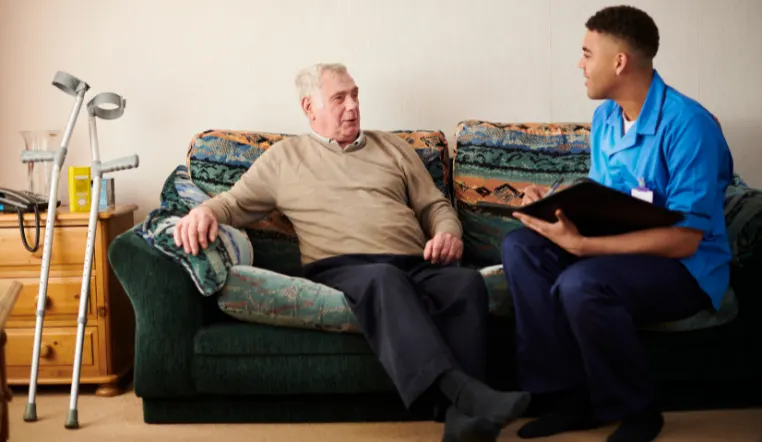Everyone who receives services from an inpatient rehabilitation center leaves with a discharge plan in place that outlines any necessary follow-up care. This plan often includes therapy exercises to be completed at home.
It might be tempting to ease up on your exercises and go back to your normal routine once you’re back in the comfort of your own home. However, it’s very important to continue with your therapy plan post-discharge.
Physical Therapy after Inpatient Rehabilitation: Why It Matters
Continuing with your physical (or occupational) therapy plan once you return home is vital to your recovery process.
When people do not follow their care plan, it is not uncommon for them to be rehospitalized after a few weeks at home. In fact, according to the American Physical Therapy Association (APTA), nearly 1 in 5 Medicare patients—2.6 million senior citizens—discharged from hospitals are readmitted within 30 days.
Continuing therapy at home can reduce your risk of rehospitalization. As Eric Ries writes in an article for PT in Motion, a publication of APTA, a study found that “‘a patient was more likely to be readmitted when the therapist discharge recommendation was not implemented and services were lacking,’ compared with instances in which [physical therapist]-recommended steps were taken.”
Continuing Therapy at Home: What to Expect
According to Next Step In Care, a helpful online resource for caregivers, there are four typical situations patients find themselves in after leaving inpatient therapy:
- Home, with no needed services.
- Home, with help from a family caregiver.
- Home, with help from a home health care service provider.
- A long-term care setting (such as an assisted living community).
If heading home is part of your discharge plan (which is something that you and your care team will discuss together before leaving the rehab center), you might be wondering what sorts of therapy you’ll be asked to complete on your own.
Below, we’ll go over a few examples of what to expect when you return home, either with help from a family member or a home health professional.
Continuing Physical Therapy at Home with a Family Caregiver
When returning home from inpatient therapy with help from a family caregiver, you will have any necessary rehabilitation outlined in your discharge plan.
If a friend or family member will be helping you at home, it’s a good idea to have these questions answered before you leave the rehab center:
- How long does it typically take to recover from this type of illness or procedure?
- What restrictions will you have and how long will those be in place?
- Will any additional physical, speech or occupational therapy be required? If yes, can it be arranged through home health care, or with an outpatient facility?
- If you live alone, will you need additional safety precautions or durable medical equipment? Are you mobile? Will you be able to care for your own physical needs including bathing, dressing and meal preparation?
- How will you get to appointments, therapy, pharmacy and grocery store?
- Will your medications interfere with activities of daily living (make you dizzy or tired)?
It’s likely that many of these questions will have already been addressed by your care team. However, if they have not, feel free to ask. Everyone’s goal is to keep you healthy and safe as you transition home after a rehab stay.
Continuing Physical Therapy at Home with a Home Health Care Provider
Home health care is another option you have after completing inpatient rehab. A home health care professional can help you continue your therapy plan, as well as provide other supportive services such as expert advice for making your home a safer environment.
“When someone discharges from here, I frequently recommend home health therapy. They need to be acclimated to their home because often they haven’t been there in months,” New Albany Rehabilitation Center Rehabilitation Manager Jeremy Evans, PTA, LMT, says. “The home health therapist can point out problem areas, such as loose rugs or no grab bars, and help them practice with things in the home. For example, the stairs may be different at home than the ones they practiced on at the rehab center.”
Home health therapists can also show you how best to exercise at home, where you won’t have access to the same equipment as you did at the rehabilitation center.
“The home health therapist can give you home exercise ideas,” Evans explains. “For example, you might not have exercise equipment at home like we do at our MacIntosh rehab centers, but they can show you easy substitutes like milk jugs filled with water for strengthening exercises.”
Meet Your Goals During and After Inpatient Rehab
As part of your rehab plan, most centers will work with you to set goals for your recovery. These goals help you stay motivated and provide benchmarks for your recovery journey.
When you return home, following your therapy plan will help you continue to meet those goals. More importantly, it will help reduce your risk of returning to the hospital or experiencing a decline in your health.



